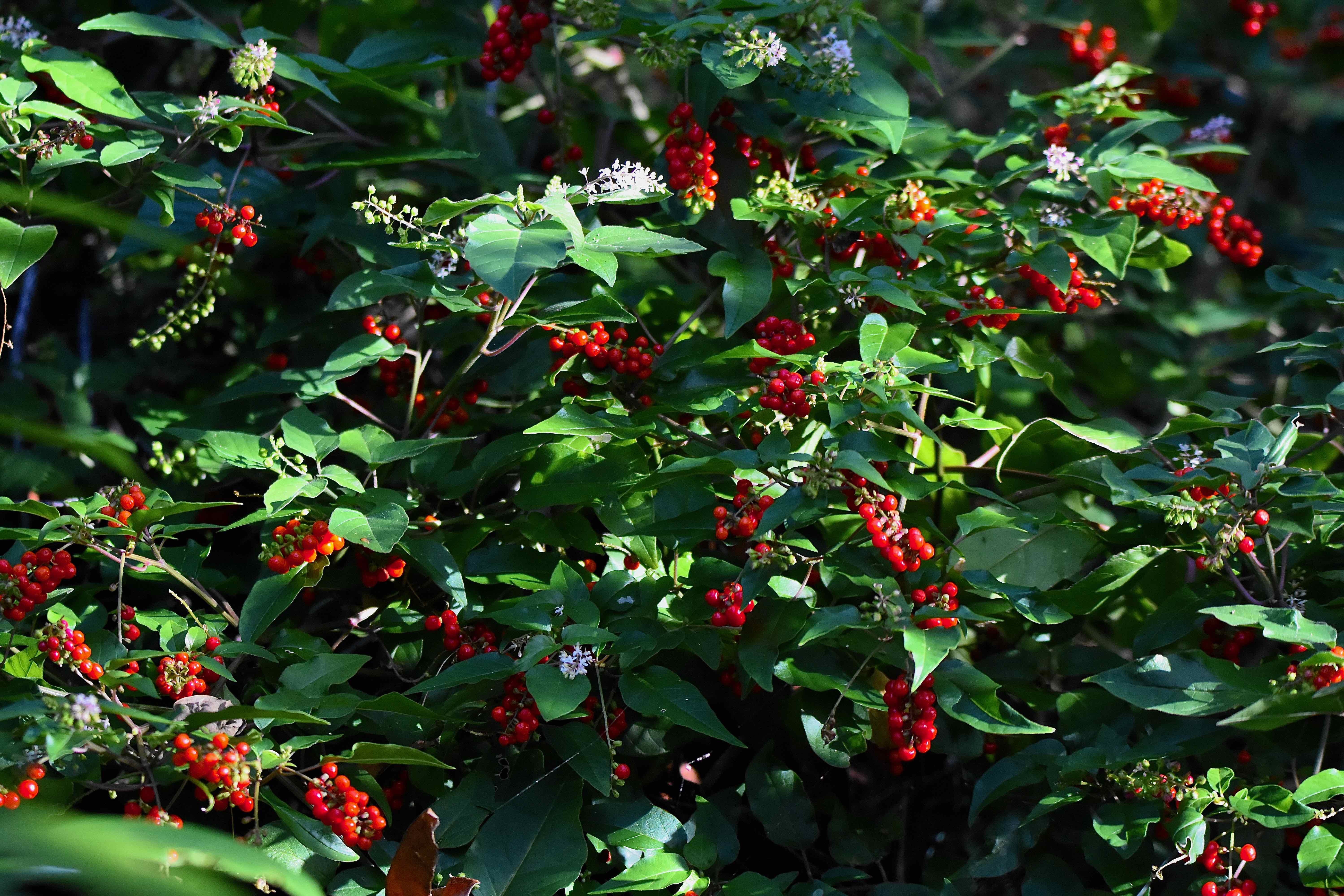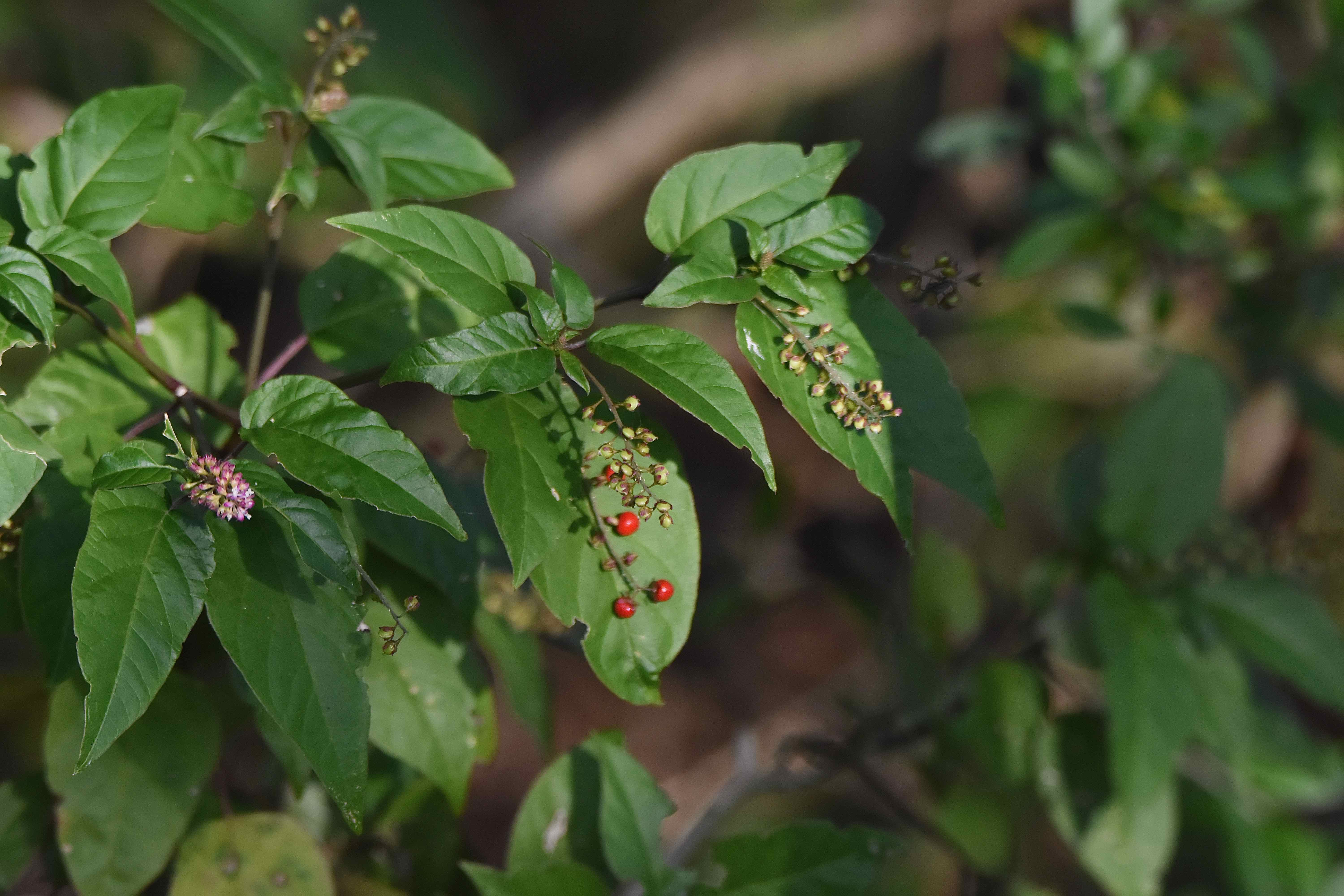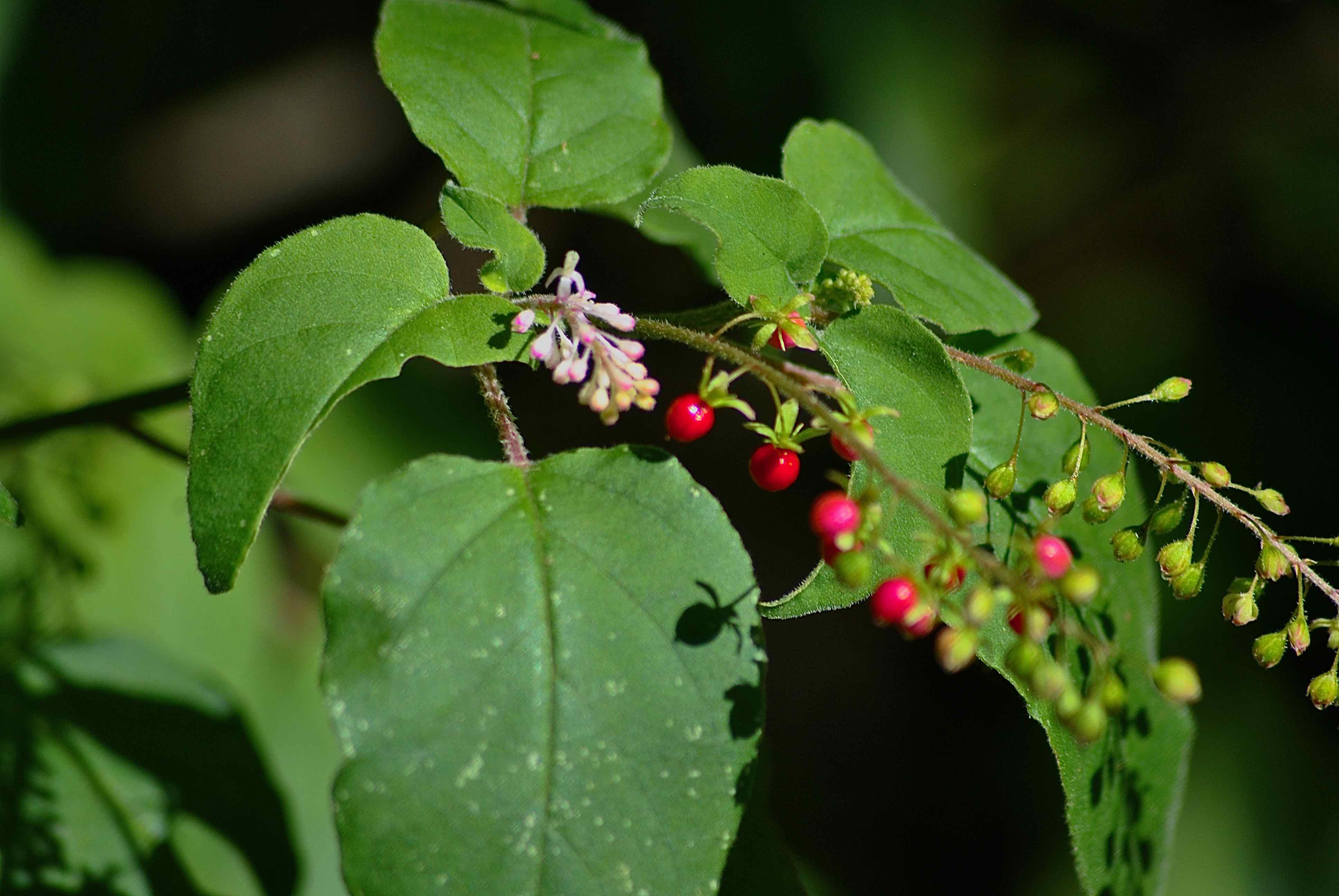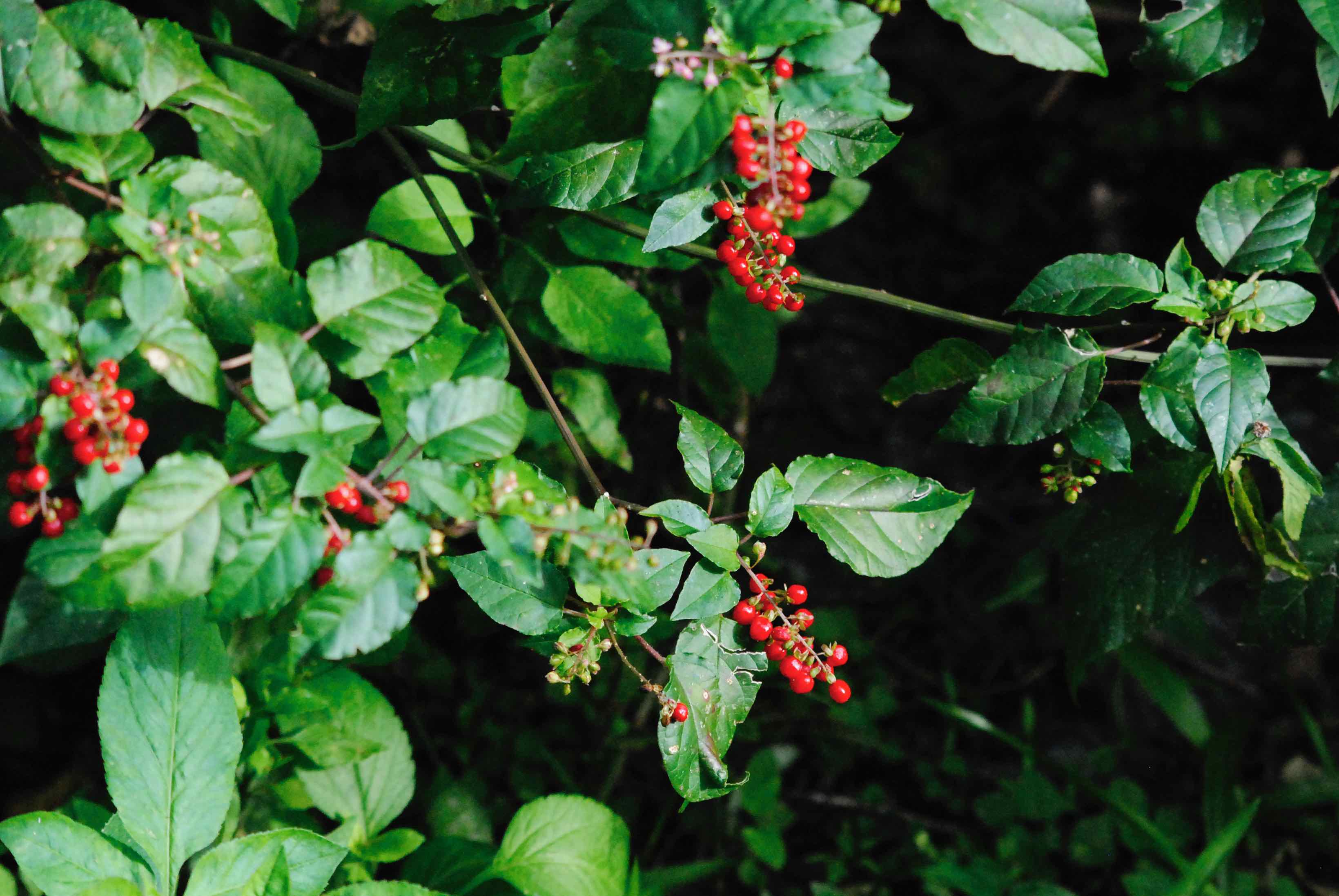
This is one plant where the fruit by far outshines the flower. Rougeplant, Rivina humilis, is a Florida native that has spread throughout the warmer regions of world in large measure because of those beautiful berries.
They are toxic, but the rich red played against the green foliage and the white to pink spikes of small flowers is irresistable to landscapers and gardeners in Asia, Africa, Australia and the Pacific Islands. Plus, the plant produces fruit all year, which means the good looks are never out of season.
Rougeplant is a small shrub, growing 1-4 feet tall in hammocks throughout the Florida peninsula. It's also found in Arkansas, Texas, Oklahoma, New Mexico and Arizona. It can be erect or straggling; the leaves vary in shape, but generally have a wavy edge to them. The fruit and flowers make the plant easy to identify. Birds and mammals eat the berries and help disperse the seeds.
It's native to the Caribbean, Mexico, Central America and South America but as noted, it has spread throughout the globe. In some places, it's considered a weed. The Philippines, Singapore and the Galapagos classify it as an invasive.
But it's a particular problem in the Pacific, including Hawaii. Rougeplant is shade-loving and fast-growing, competing with natives for resources. In Hawaii, it's seen as a threat to several endangered species.
The berries do have commercial value as well as aesthetic. They are used to make pigments for dyes and cosmetics. Rougeplant also has some medicinal value — scientists have isolated some antioxidant compounds — and has been used in folk medicine to treat colds, diarrhea, gonorrhea, flatulence and other conditions.
In Jamaica, rougeplant is used in traditional medicine as an external treatment for inflammatory conditions. The leaves are also used to make a tea used externally to treat cuts, bruises and other skin conditions. One university study conducted in India in 2014 found rougeplant had potential as a botanical insecticide to combat an agricultural pest known as the army worm.
Here in the United States, rougeplant is mostly used in landscaping as a foundation plant, in restorations and natural landscapes. It likes moist places but is somewhat drought tolerant; it doesn't require a lot of nutrients but it likes soils with some humous, or organic material. The plant is a long-lived perennial.
Other common names for rougeplant include pigeonberry, baby peppers, bloodberry, dog blood and rouge plant. It is a member of Phytolaccacea, the pokeweed family.
Click on photo for larger image
Links for Rougeplant



